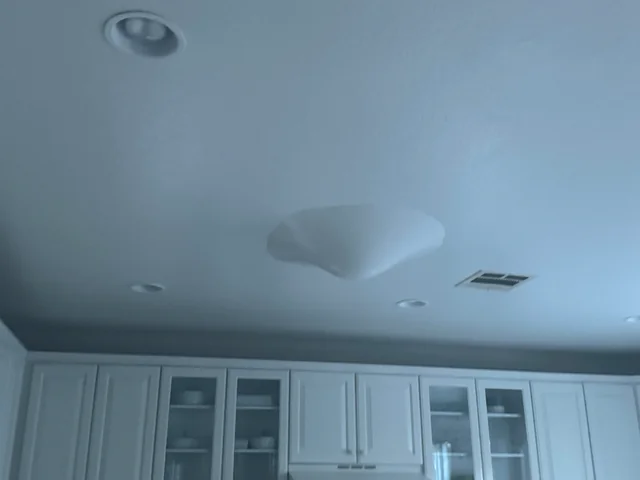Hey there, fellow homeowners! Picture this: It’s a rainy afternoon, and you’re cozied up inside with a hot cup of coffee, scrolling through your feed. Suddenly, you hear that dreaded drip, drip, drip from the ceiling. Sound familiar? If you’ve ever brushed off a tiny roof leak thinking, “Eh, it’ll dry up,” you’re not alone. But let me tell you—as someone who’s seen countless homes saved (and a few disasters averted) through our work at Pro Roofing America—that small drip could be the tip of a very expensive iceberg.
In this post, we’re diving deep into why those seemingly harmless leaks aren’t just annoying; they can lead to massive headaches down the road. We’ll cover the red flags, the real costs of procrastination, and how to fix things before they spiral out of control. Whether you’re in sunny California or snowy Michigan, this guide is your go-to for protecting your biggest investment—your home. Let’s get into it!
Why Small Roof Leaks Are Sneakier Than You Think
Roof leaks don’t announce themselves with fanfare. They start subtle, like a whisper in the wind, but ignore them, and they roar into a storm. According to roofing experts (and trust me, we’ve chatted with plenty), about 40% of all home insurance claims stem from water damage—and roofs are the usual suspects.
Think about it: Your roof battles everything Mother Nature throws at it—blistering sun, pounding rain, heavy snow, and those wild wind gusts. Over time, even the toughest shingles or tiles wear down. A small crack from a fallen branch or a loose flashing around your chimney might let in just a trickle at first. But here’s the kicker: That moisture seeps into your attic, insulation, and walls, breeding mold, rotting wood, and inviting pests. Before you know it, you’re dealing with structural damage that could cost thousands to repair.
Pro tip: Don’t wait for the stain on your ceiling to grow. Early detection is key to affordable roof repair.
Spotting the Signs: When to Call in the Pros for Roof Inspection
Okay, let’s make this practical. How do you know if that leak is “no big deal” or a roofing emergency? Here’s a quick checklist based on what we’ve seen in homes across America:
- Water Stains on Ceilings or Walls: These brownish rings aren’t just ugly—they signal ongoing leaks. Check your attic for damp spots too.
- Missing or Curled Shingles: Take a peek from the ground (safely, please—no ladders if you’re not comfy). If shingles look like they’re waving goodbye, water’s getting underneath.
- Granules in Gutters: Asphalt shingles shed granules as they age. Finding a bunch in your gutters? Your roof’s protective layer is failing.
- Mold or Musty Smells: That funky odor in your home could mean hidden moisture. Mold grows fast and can affect your family’s health.
- Higher Energy Bills: Leaks let in drafts, making your HVAC work overtime. If your bills are spiking without reason, your roof might be the culprit.
If any of these ring a bell, it’s time for a professional roof inspection. At Pro Roofing America, we offer free consultations to catch issues early—because prevention beats a full roof replacement any day.
The Real Cost of Delaying Roof Repairs
Let’s talk numbers, because who doesn’t love saving money? A minor roof repair might set you back $300–$1,000. But let that leak fester, and you’re looking at $5,000+ for water damage restoration, not to mention potential health hazards from mold remediation.
I remember a client in Texas who ignored a small leak after a hailstorm. By the time they called us, the attic was a soggy mess, and termites had moved in. What could have been a quick fix turned into a $15,000 nightmare. Stories like this are why we emphasize urgency—your roof isn’t just overhead; it’s your home’s first line of defense.
And hey, investing in quality roofing services now can boost your home’s value. Buyers love a solid roof; it screams “well-maintained” and can add thousands to your resale price.
Choosing the Right Roofing Material to Prevent Future Leaks
Prevention is better than cure, right? If you’re due for a roof upgrade, picking the right material is crucial. Here’s a breakdown to help you decide:
- Asphalt Shingles: Affordable and versatile, great for most climates. Lifespan: 20–30 years.
- Metal Roofing: Super durable against leaks, reflects heat to cut cooling costs. Ideal for rainy or snowy areas. Lifespan: 40–70 years.
- Tile or Slate: Elegant and long-lasting, but heavier—ensure your structure can handle it. Lifespan: 50+ years.
- Wood Shakes: Rustic charm, but prone to leaks if not treated. Best in dry climates.
No matter what you choose, proper installation is non-negotiable. That’s where our team at Pro Roofing America shines—we handle everything from roof installation to maintenance, using top-tier materials tailored to your needs.
Wrapping It Up: Don’t Let Leaks Rain on Your Parade
Small roof leaks might seem insignificant, but they’re like that one ignored email that turns into a full inbox crisis. By staying vigilant, spotting signs early, and calling in experts for roof repair or inspection, you can avoid costly disasters and keep your home safe and dry.
Ready to safeguard your roof? Head over to our services page or contact us today for a no-obligation quote. We’ve got roofs covered from coast to coast—let’s make sure yours is too!
What roofing woes have you faced? Drop a comment below—we’d love to hear your stories and share more tips.
Stay dry out there, The Pro Roofing America Team

